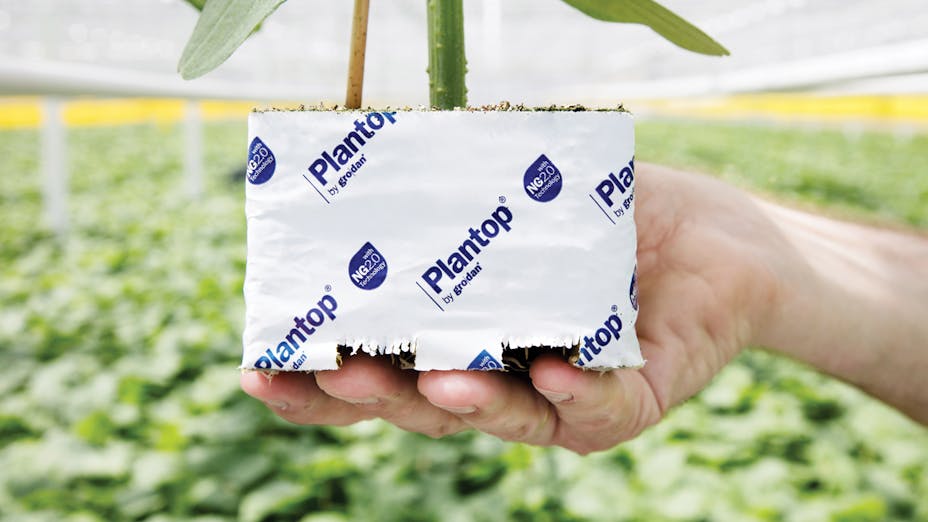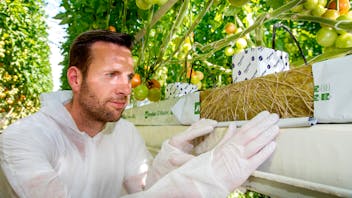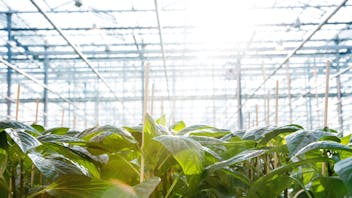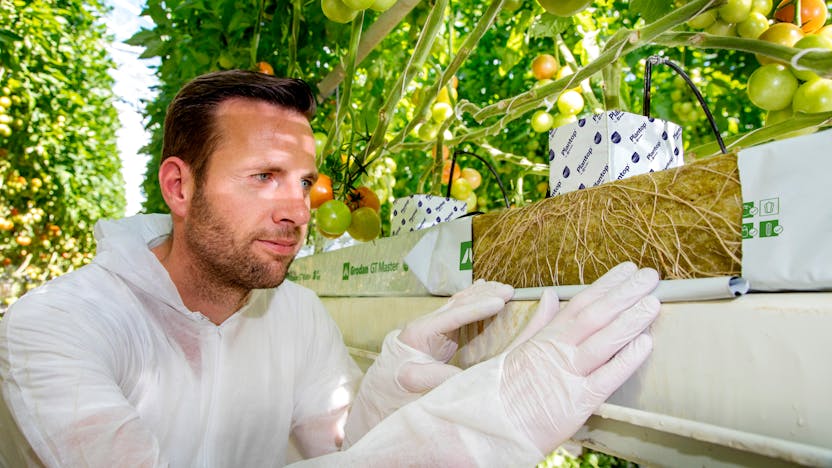Wageningen University & Grodan about efficient water usage and wastewater management
World Water Day is about focusing attention on the importance of water. Did you know that today 2.1 billion people live without safe drinking water at home? And that the world has committed itself to ensure that everyone has access to safe water by 2030? The latter is stated in Sustainable Development Goal 6 which also includes targets like protecting the natural environment and reducing pollution - the Sustainable Development Goals are created by the United Nations. Agriculture plays a major role in water pollution and accounts for 70 percent of water abstractions worldwide. That’s why we ask two dedicated experts – Leo Marcelis, Head of chair group Horticulture and Product Physiology at Wageningen University, and Stuart Lambie, Sustainability Manager at Grodan – to share their views on water usage in the horticulture sector.
Hydroponic greenhouse cultivation: wastewater management
Global attention is primarily focused on water quantity, water-use efficiency and allocation issues, however poor wastewater management has created serious water-quality problems. Both Marcelis and Lambie agree that dedicated wastewater management in greenhouses, through irrigation technologies, is crucial if we want to grow crops sustainably. Leo Marcelis emphasizes the importance of ‘having technology in place that enables growers to collect and re-use water that is not absorbed by the plant. Growing plants on a substrate (like Grodan) for instance allows growers to collect drain water efficiently and reapply it to the crop’.
Stuart Lambie explains that hydroponic greenhouse cultivation provides part of the solution to provide future generations with healthy and safe food – with respect for scarce natural resources like water and fertilisers. ‘Grodan technology enables growers to give the plant exactly what it needs – no more no less’.
" Growing a kilo of tomatoes in the open field requires a whopping 60 litres of water, whereas in hydroponic greenhouse cultivation only 15 litres are needed’ – Stuart Lambie (Grodan) "
Lambie continues: ‘Water savings come from more efficient water application methods, like irrigation measurement at the crop or drain water re-use.’
Looking ahead: future and desired innovations
Next to collecting and re-using drain water as described above, there is an option to collect transpired water in greenhouses? ‘That is correct. Plants are often covered in greenhouses which leads to less waste of water through transpiration. However, condensed water is currently hardly collected, so there is more to gain here’, says Marcelis. What is needed to change this? ‘The technology we need exists but it’s expensive at the moment. We may expect that it will become economically feasible in the future’.
Stuart Lambie expects for the future that ‘we will see an increased level of usage when it comes to closed systems for recirculation. It’s very common in the Netherlands and is also being used by the most advanced growers in some other countries, however on a global level there is still room for improvement’.
Let’s make waves together: collaboration in horticulture
For the horticulture world to make a difference there are many things to consider – from the production of sustainable substrates to ultimate wastewater management technology, and from high-tech sensors in greenhouses to collecting transpired water. The Wageningen University and Grodan agree that for this reason collaboration in the sector is key. Stuart Lambie explains that ‘there is collaboration between suppliers and the horticulture industry, but there is room for improvement. Wageningen University takes the lead in bringing companies together which leads to valuable developments. Grodan is currently working with the University to develop a calculation tool.’
Leo Marcelis explains the tool: ‘it will calculate water, fertiliser and land use for each kg of fresh produce grown in Grodan growing systems compared to alternative systems based on soil. The tool will calculate these parameters for tomato and cucumber and will take into account the climate zone where the crops are grown’. Stuart Lambie adds: ‘the tool will be updated over time as new research data emerges, allowing us to increase the accuracy of the calculations. The objective is to demonstrate the global impact of using Grodan growing systems on water, fertiliser and land use. Grodan’s aim is to develop innovative products that enable growers to use less water, fertiliser and land, while the amount of fresh produce increases.’
World Water day 2018: Nature for Water
This years’ theme evolves around Nature for Water – so nature-based solutions to water challenges across the globe. When talking about nature-based solutions in horticulture Leo Marcelis explains that the use of rainwater is crucial. ‘Dutch growers are fairly advanced when it comes to collecting rainwater and re-use it for production. Rainwater is very clean (good quality) so ideal for a horticulture environment. As this water is very clean, and does not contain high concentrations of salts, it allows that the water supplied to the plants can be re-used many times.’ Stuart Lambie adds that ‘our stone wool growing media solutions are made from natural substances (stone), which enables us to truly enable sustainable growing’.











